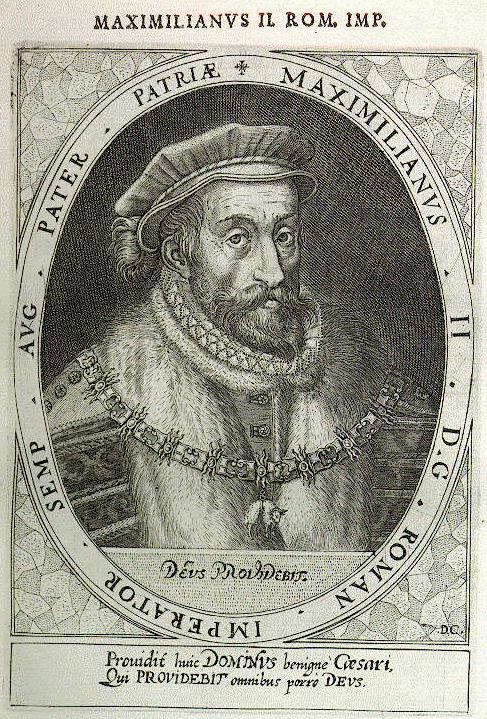14.5.1562 Maximilian II crowned King of Bohemia
Categories: Personalities , Calendar
 He was one of the tolerant rulers who knew how to maintain religious balance. Maximilian II was crowned King of Bohemia on 14 May 1562. However, he visited Prague only four times.
He was one of the tolerant rulers who knew how to maintain religious balance. Maximilian II was crowned King of Bohemia on 14 May 1562. However, he visited Prague only four times.
Already as a boy, Maximilian II was both clever and friendly. He could enjoy life, was interested in art and liked to dance. And as a "true" Habsburg, he loved hunting and even founded a stud farm in Kladruby. However, in his adult life he was plagued by frequent health problems, heart problems, gall bladder and kidney stones. He feasted on alcohol and women. He did not like to argue or resolve conflicts. He was known to sympathize with non-Catholics.
He came to power on 27 July 1564 after the death of his father, Ferdinand I. At his side was Mary of Spain, whom he married. She was the daughter of Maximilian's uncle Charles V, who introduced him to the ways of the empire. The marriage of Maximilian and Maria was to cement relations between the Spanish and Austrian branches of the Habsburgs. And because it was a longer-term endeavor, the aforementioned marriage made to unite the family was not the only one.
Maximilian was not too keen on Prague and left his brother Ferdinand of Tyrol to rule for three more years after his father's death. He regarded Prague Castle as a symbolic Habsburg seat. Maximilian settled in Vienna and during his reign visited Prague only four times when he had a serious reason. He was crowned King of Bohemia on 14 May 1562.
"Even Ferdinand's eldest son, Maximilian II, did not move to Prague, even though he was said to have the best Czech language and the most intolerant of all the Habsburgs on the Czech throne. Indeed, he came to Prague only four times in twelve years, and then only briefly. Prague Castle therefore occupied a shameful symbolic position during his reign. This state of affairs was only changed by the stature of the short, dim-witted and educated Rudolf II, who, against the wishes of his father Maximilian II, took up permanent residence at Prague Castle. The reason for this, however, was not his warm relationship with the Czechs or Prague, but rather his desire for peace and solitude," writes Stanislava Jarolímková in her book What Guidebooks Don't Include.
In 1567, Maximilian wanted to ask the Bohemian Provincial Assembly to approve a tax to finance the fight against the Turks. He hoped that his presence for at least a few months would calm the Bohemians asking him to move from Vienna to Prague. In the spring of 1570, during the wedding of King Philip II of Spain, he made an unprecedented spectacle for the people of Prague. and his daughter Anna in the Old Town Square, he created an imitation of the Italian volcano Etna, from which fire and smoke poured, stones spewed and chamois raced on its slopes.
Maximilian is also famous for confirming the Bohemian Confession in 1575, which was the legal basis of Lutheranism in Bohemia. He died during a meeting of the Reichstag in Reichstag in 1576, while discussing the invasion of Poland. He is buried at Prague Castle.
Sources.
The article is included in categories: